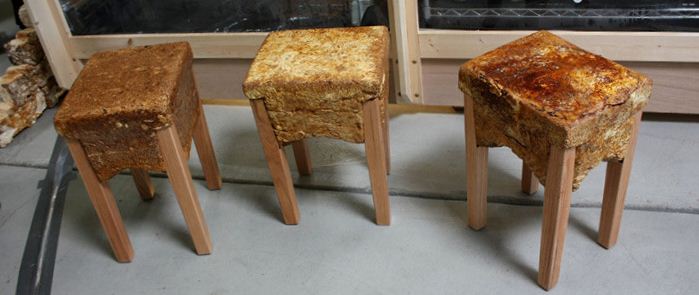Share




What first comes to your mind when you hear the word "fungi"? You might feel alarmed due to the diseases associated with some of them. Or, you might feel the desire to eat some delicious dish containing some of their edible types. Yet, would you imagine sitting on a chair made of fungi? Or dining at a table made of fungi? This might read quite strange; I hereby invite you to know more about furniture made of fungi.
According to the World Economic Forum Report, plastic use is increasing around the world and is expected to multiply in coming years. The trend of making furniture of fungi has, thus, emerged as a satisfactory and sustainable alternative for wood, plastic, and other substances used in the industry. Several companies and individuals have turned to this industry; according to Eben Bayer, CEO of Ecovative Design: “What we do that is unique is that we use biological organisms to literally grow our product”.
Fungi have some particular characteristics; their growth unique method makes them strong and flexible. Unlike other plants, fungi cell walls are budded together by a fibrous substance known as Chitin. Also, fungi are fast growers, ensuring a speedy formation of durable and microbe-resistant pieces of furniture.
The manufacturing process of fungi furniture starts by using an agricultural byproduct; such as sawdust or any other agricultural waste. This substance is then mixed with water and some fungal cells. It is advisable to use fungal cells of species that grow at room temperature to avoid the cost of incubation devices needed to adjust temperatures to grow different types of fungi.

The fungus feeds on the agricultural waste for some weeks, growing to form entangled mycelia(1), which are placed in a mold to produce the needed shape. After molding, the piece is inserted in an oven to complete the protein coagulation(2) process and kill fungi. The pieces made of fungi can be later connected to other pieces made of wood. Depending on the used ingredients and the conditions of growth, the final products can be used as blocks, tiles, or table heads.
This method is not exclusively used for furniture making, but also for making encasements for electronic appliances as an alternative to cork. It is worth mentioning that Dell already uses these fungal products in laptop shipments. Moreover, using fungi in the industry of fabrics, shoes, and other products is becoming a trend. Turning to sustainable industries can make a positive change in our relationship with ecosystems. Once these products are disposed of, they degrade into nutrients that would support new life. Additionally, this trend would also preserve the green areas around us and keep us healthy by avoiding harmful substances such as formaldehyde.
Fungi are the future; designers and manufacturers are working around the clock to develop this industry. So, would fungi really become the biological alternative for industries in the future? We really hope so.
Glossary
(1) Mycelia: The part of the fungus body made of entangled fungal threads.
(2) Protein coagulation: A process through which protein properties change due to exposure to high temperatures or some chemicals. As a result of this process, proteins existing in living tissues become incapable of performing their biological functions.
References
blogs.scientificamerican.com
popsci.com
dezeen.com
news.nationalgeographic.com
edition.cnn.com